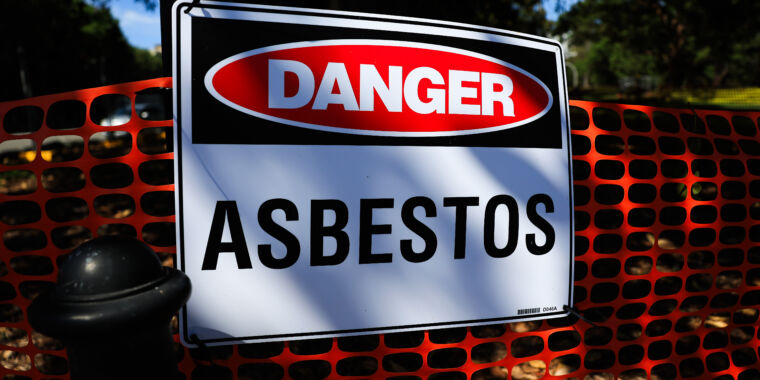The Environmental Protection Agency Finalizes Ban on Chrysotile Asbestos
The Environmental Protection Agency (EPA) made a significant move on Monday by finalizing a ban on the only form of asbestos still utilized in the United States, known as chrysotile asbestos. This prohibition was the culmination of years of effort.
Health Implications of Chrysotile Asbestos
The EPA highlights that white asbestos, or chrysotile asbestos, continues to be imported, processed, and employed in various industries within the US, including the creation of diaphragms for producing sodium hydroxide and chlorine, sheet gaskets, brake blocks, automotive brakes, and linings, among other friction products and gaskets. Exposure to this substance is documented to result in severe health issues such as lung cancer, mesothelioma, ovarian cancer, and laryngeal cancer. Annually, asbestos exposure is responsible for over 40,000 deaths in the US alone.
International Context and Historical Background
The ban enacted by the US EPA places the country among more than 50 other nations that have already implemented similar prohibitions on asbestos. Initial efforts to ban asbestos in the US date back to 1989 during the George H. W. Bush administration. However, a federal court invalidated the ban in 1991, undermining the EPA’s authority. In 2016, Congress passed amendments to enhance the Toxic Substances Control Act of 1976, providing an opportunity to reintroduce an EPA ban on asbestos. Unfortunately, under the Trump administration, this did not materialize.
Trump Administration’s Stance on Asbestos
Former President Trump openly advocated for the use of asbestos, going so far as to declare it “100% safe” once applied. He attributed the resistance against asbestos to alleged mob influence, asserting that mob-affiliated companies were behind the opposition to its discontinuance. In 2018, a Russian asbestos firm began marketing asbestos products in the US featuring Trump’s image and an approval seal reading “Approved by Donald Trump, 45th President of the United States.” Russia has been a significant supplier of asbestos to the US, adding complexity to the regulation of this problematic substance.
Future Challenges and Legislative Outlook
Considering the looming possibility of a Trump presidency, concerns arise that the ban on asbestos could be overturned. Consequently, there is a push for Congress to pass comprehensive legislation that would ban all types of asbestos outright. Senator Jeff Merkley emphasized the importance of further legislative action to safeguard public health.
Implications of EPA Ban and Transition Schedule
Under the newly finalized ban by the EPA, companies using chrysotile asbestos have a transition period to phase it out. While the immediate import of asbestos for the chlor-alkali industry will be prohibited, facilities utilizing asbestos diaphragms will have up to 12 years to switch to non-asbestos alternatives. Specific timelines are outlined for different asbestos-containing products, with different industries having varying phases to comply with the ban.
Image/Photo credit: source url





